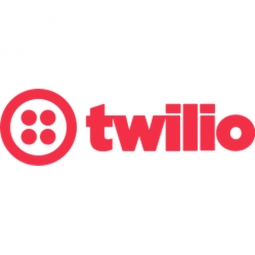Technology Category
- Analytics & Modeling - Real Time Analytics
- Platform as a Service (PaaS) - Device Management Platforms
Applicable Industries
- Electronics
- Telecommunications
Applicable Functions
- Maintenance
- Sales & Marketing
Use Cases
- Real-Time Location System (RTLS)
- Speech Recognition
Services
- System Integration
- Testing & Certification
About The Customer
iCracked is the world's largest and most efficient on-demand repair and buyback service for Apple iPhones, iPads, and iPods. With more than 500 local technicians in 11 countries, iCracked is built on fast, professional service, making it easy for customers to repair or sell their iOS devices by dispatching a certified 'iTech' in real-time to a convenient location of the customer's choosing. The company was founded to make iOS device repairs quick, convenient, and reliable, ensuring that consumers aren't left stranded when their iPhone, iPad, or iPod malfunctions.
The Challenge
iCracked, a smart device repair and reselling network, faced a significant challenge in providing a high-quality and responsive customer service experience for its users. The company initially listed hundreds of its technicians' personal phone numbers on its website, which proved to be highly inefficient and frustrating for customers who had to cold call down the list to find an available technician. iCracked then turned to a virtual phone system offering, which lacked the APIs for building advanced automation capabilities. Without call tracking and recording, it was difficult to monitor customer interactions and virtually impossible to guarantee service. The communications platform in place also failed to scale with iCracked, resulting in poor call quality and dropped calls. iCracked needed a powerful and flexible communications platform that would enable the company to easily integrate advanced communications features into its business processes.
The Solution
iCracked turned to Twilio SMS and Twilio Voice to automate work scheduling, measure technician productivity, support real-time customer communication, and deliver superior customer service. iCracked sends status updates and enables work scheduling using Twilio SMS for two-way alerts and notifications. Once the customer has entered his information, including device type, repair issue, and location, into iCracked's mobile app or website, the customer is updated via SMS that the order request was received and an iTech will contact them shortly. On the backend, iCracked sends an SMS to the pool of iTechs located closest to the customer. iTechs can then respond to that text to accept the job. Twilio also enables call tracking and recording for each service request, which are critical quality control features for iCracked to measure technician productivity, ensure business isn't conducted outside of the system and learn from various scenarios to continually improve service.
Operational Impact
Quantitative Benefit

Case Study missing?
Start adding your own!
Register with your work email and create a new case study profile for your business.
Related Case Studies.

Case Study
Remote Temperature Monitoring of Perishable Goods Saves Money
RMONI was facing temperature monitoring challenges in a cold chain business. A cold chain must be established and maintained to ensure goods have been properly refrigerated during every step of the process, making temperature monitoring a critical business function. Manual registration practice can be very costly, labor intensive and prone to mistakes.

Case Study
Cloud Solution for Energy Management Platform-Schneider Electric
Schneider Electric required a cloud solution for its energy management platform to manage high computational operations, which were essential for catering to client requirements. As the business involves storage and analysis of huge amounts of data, the company also needed a convenient and scalable storage solution to facilitate operations efficiently.

Case Study
Leveraging the IoT to Gain a Competitive Edge in International Competition
Many large manufacturers in and outside Japan are competing for larger market share in the same space, expecting a growing demand for projectors in the areas of entertainment, which requires glamor and strong visual performance as well as digital signage that can attract people’s attention. “It is becoming more and more difficult to differentiate ourselves with stand-alone hardware products,” says Kazuyuki Kitagawa, Director of Service & Support at Panasonic AVC Networks. “In order for Panasonic to grow market share and overall business, it is essential for us to develop solutions that deliver significant added value.” Panasonic believes projection failure and quality deterioration should never happen. This is what and has driven them to make their projectors IoT-enabled. More specifically, Panasonic has developed a system that collects data from projectors, visualizes detailed operational statuses, and predicts issues and address them before failure occurs. Their projectors are embedded with a variety of sensors that measure power supply, voltage, video input/ output signals, intake/exhaust air temperatures, cooling fan operations, and light bulb operating time. These sensors have been used to make the projector more intelligent, automatically suspending operation when the temperature rises excessively, and automatically switching light bulbs. Although this was a great first step, Panasonic projectors were still not equipped with any capability to send the data over a network.






